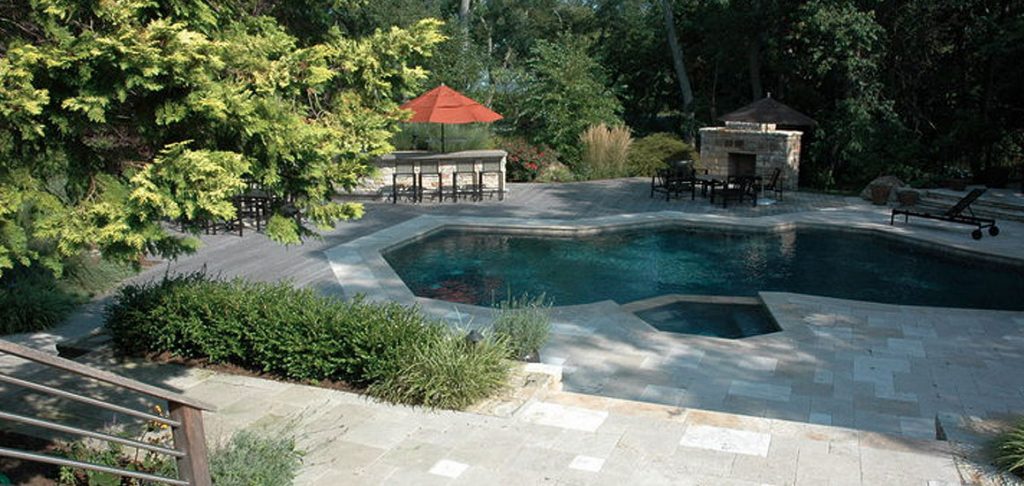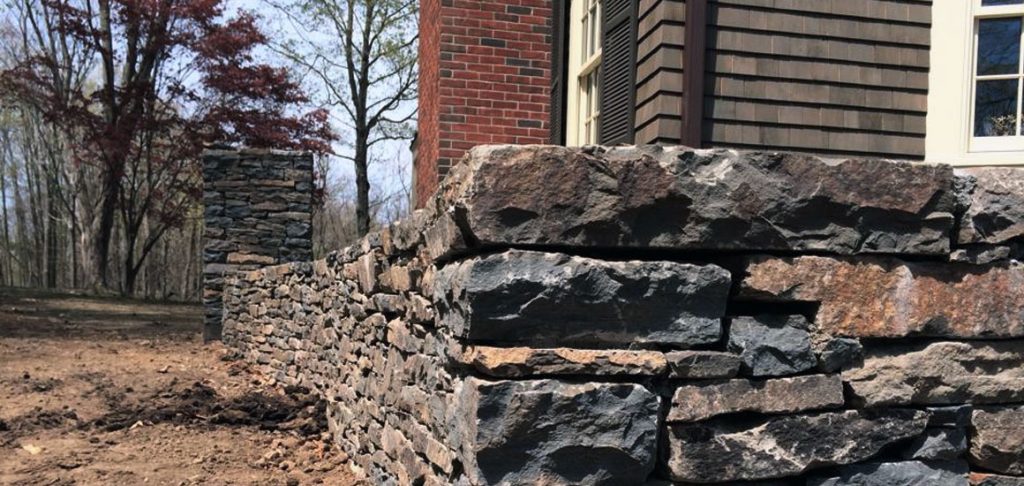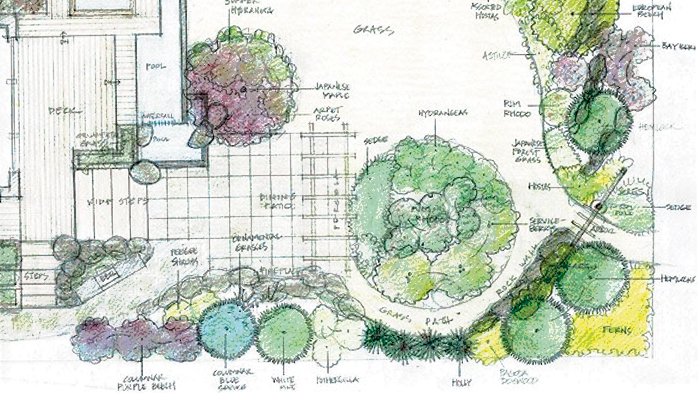Basic design elements are parts which can be isolated and defined in any visual design or work of art. When it comes to landscape design, there are several basic landscape design elements that go into every project.
- Focal Point
- Line
- Form
- Texture
- Color
- Balance
- Scale
Focal Point:
 In any design project, there is usually one or a couple main areas of focus. These areas immediately draw your eye in and catch your attention by taking a position of prominence. Common focal points in landscape design are water features, a sculpture, strategic paths, etc. A focal point allows for you to choose what feature of your landscape design you want to stand out, and build the rest of your design as complimentary around this focal point.
In any design project, there is usually one or a couple main areas of focus. These areas immediately draw your eye in and catch your attention by taking a position of prominence. Common focal points in landscape design are water features, a sculpture, strategic paths, etc. A focal point allows for you to choose what feature of your landscape design you want to stand out, and build the rest of your design as complimentary around this focal point.
Line:
In landscape design, lines should be dramatic and very expressive in their shape. Lines that are weak can be visually uninteresting and sloppy to the eye. Lines can also help direct the flow of your landscape. A path or meandering lines invites a user to casually stroll through a landscape, following the lines as a guide. Depending on the type of lines, they can also evoke certain emotions. As path lines suggest a more casual feel, linear lines, like those found in straight edges, can suggest quick and direct movement. Lines that interconnect or form right angles can create an opportunity for stopping or sitting, and may be a great place for a bench or swing feature.
Often line refers to structures within a landscape, like the edges of a walkway, or the perimeter of a deck or patio. Vertical lines can be used to pull a viewer’s eyes attention up, while horizontal lines can help to make a space look bigger and keep the focal point along the ground.
Form:
Form is one of the landscape design elements and it refers to shapes created by objects in design. Some examples of form in a landscape are rectilinear shapes of the house, walkways, driveways, and plant/shrub shapes. Rectilinear forms feel structured and formal, while circles can create a softer feel, and irregular shapes give off a casual feel. Weeping or drooping forms (like a weeping willow) can also be used to create softer lines that serve as more interesting accents in a landscape.
Texture:
 The element of texture relates to things like coarseness, roughness, smoothness, heaviness, etc. Texture in a landscape is dependent on the distance in which a plant or landscape piece is being viewed by the observer. Texture is often observed and appreciated more accurately at a close distance. Roughness or smoothness of a bark, or heaviness of foliage are examples of texture in a landscape design. Another great way to create texture is through hardscaping. It is important that texture is balanced in relation to the axis. Meaning, the weight on one side of a design should balance the other. An assortment of textures in a landscape helps to create variety.
The element of texture relates to things like coarseness, roughness, smoothness, heaviness, etc. Texture in a landscape is dependent on the distance in which a plant or landscape piece is being viewed by the observer. Texture is often observed and appreciated more accurately at a close distance. Roughness or smoothness of a bark, or heaviness of foliage are examples of texture in a landscape design. Another great way to create texture is through hardscaping. It is important that texture is balanced in relation to the axis. Meaning, the weight on one side of a design should balance the other. An assortment of textures in a landscape helps to create variety.
Color:
Color is a design element that is reliant heavily on personal preference and tastes. However, certain colors do evoke certain emotions.
- Warm colors (reds, oranges, yellows) are more forthcoming and vibrant effecting the eye more quickly. These colors can evoke more aggressive, cheery, and energetic feelings.
- Cool colors (blues, violets, and greens) recede more into a landscape. Cooler hues evoke more stable and serene emotions.
- When it comes to color, it is also important to consider seasonal color changes.
Balance:
Balance is a psychological sense of equilibrium, and as a design principle it can either be symmetrical, which is more formal, or asymmetrical, which is more informal. For a symmetrical, formal design, the weight, mass, and/or number of objects on either side of the central axis should be exactly the same. Whereas, for an asymmetrical design, plants should be irregularly placed. However, even in an asymmetrical design, cohesiveness is still important to avoid a “haphazard” look.
Scale:
Scale refers to the size relationship between elements in a landscape design. When deciding on the right scale for your landscape project, you should consider both the size of your home and your available yard space. Balance and scale often go hand-in-hand because your scale should also be balanced. Having an extremely large tree right next to a really small shrub can disrupt cohesiveness.
A landscape design that correctly incorporates all of these design principles is not easy for an untrained homeowner. For this reason, in order to ensure the most beautiful, and cohesive result, it is important to hire the professionals! Red Cedar has over 30 years in the landscape industry and this has given us the knowledge and experience to design and build every detail of your outdoor environment to your liking. Trust in Red Cedar to turn your backyard ideas into a professional landscape design! Contact us today for your free consultation!


